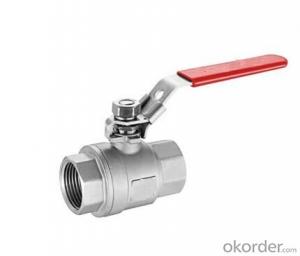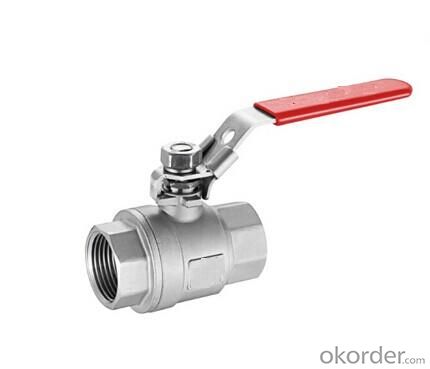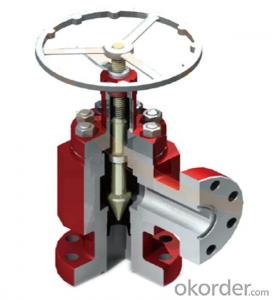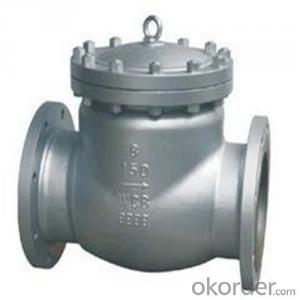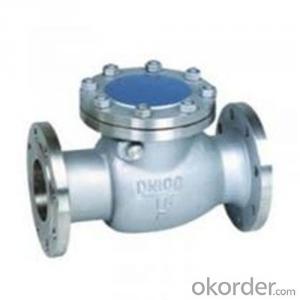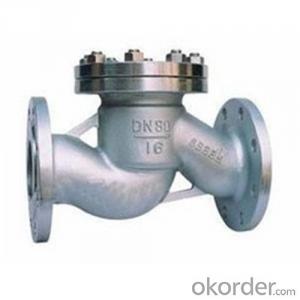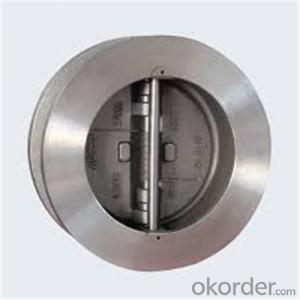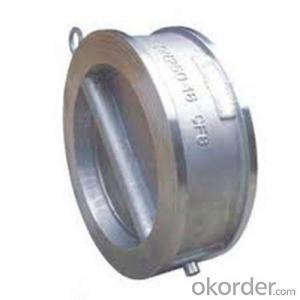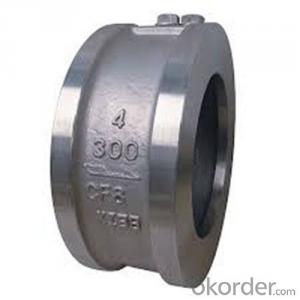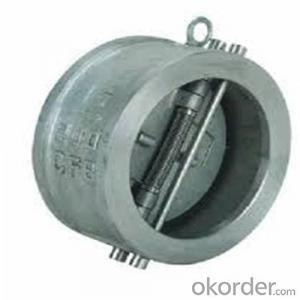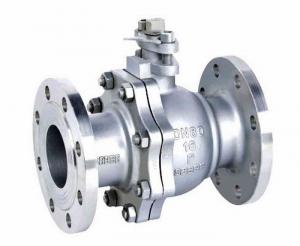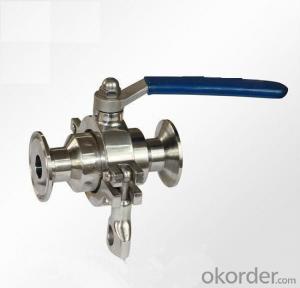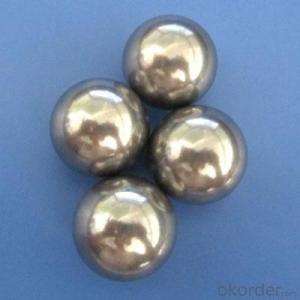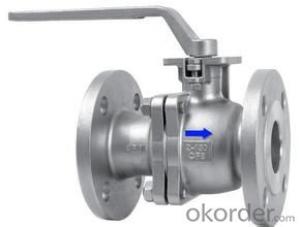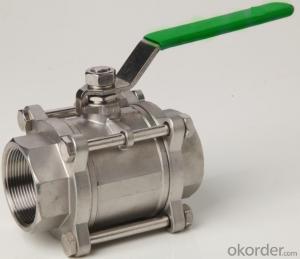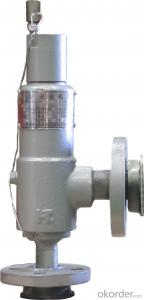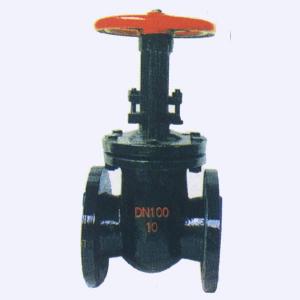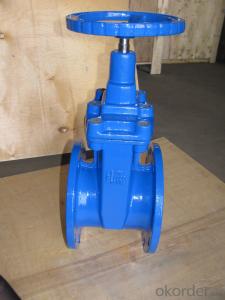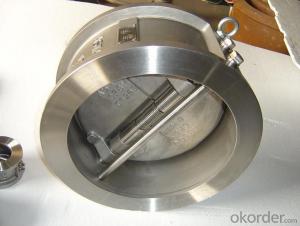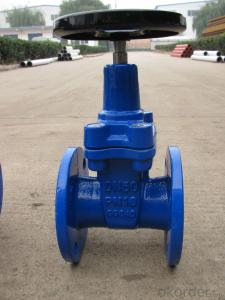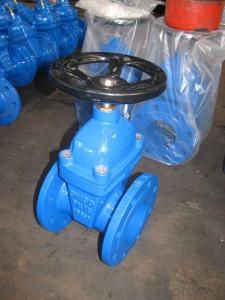High Quality Manual Ball Valve Stainless Stee Ball Valve
- Loading Port:
- Tianjin
- Payment Terms:
- TT OR LC
- Min Order Qty:
- 0 pc
- Supply Capability:
- 50000 pc/month
OKorder Service Pledge
OKorder Financial Service
You Might Also Like
1.Features
The appearance is beautiful.
Material conform to the standard.
Every size produce according to the standard.
2.Specification
1. CF8M/CF8,SS316/SS04,1.4408/1.4301
2. Carbon Steel Ball Valve,with threaded ends ,BSPT,NPT .
3. Applicable media: Water Oil ,Steam, Nitric acid, Acetic acid.
4. Nominal pressure: 1.6. 2.5. 4.0. 6.4Mpa
5. Main size: 1/4" 3/8" 1/2" 3/4" 1" 1-1/4" 1-1/2"2" 2-1/2" 3" 4"
6. Materials of main parts:
7. Valve body: WCB ,CF8, CF8M
8. Stem: 304 316
9. BALL: 304 316
10. Packing: PTFE.
11. Sealing: PTFE
3.Trade Terms
Payment:T/T,30% deposit;70% balance before shipment.
4.Application
Drinking Water Plants
Industrial Water Treatment Plant
Water Softener & Purifier
Water Treatment Plants
Filtration and Sedimentation Units
Flower water treatment
Solar energy water treatment system
Boiler water treatment system
Swimming Pool Filtration Plant, etc.
5.Why Choose us?
1.We are a factory who focus on produce valves for 20years.
Adhere To Quality Is Our Belief.
2.All valves according the drawings to produce and 100% pressure testing,100% material inspection.
3.We use ERP system to improve the work efficiency.
6.Picture
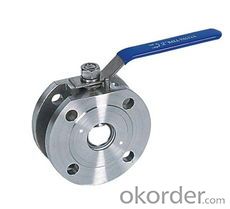
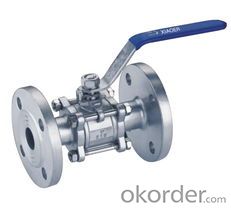
- Q: Okay, I got a 347 stroker and I noticed a spot that was leaking under one of my valve cover gaskets. So I went ahead and bought new gaskets. But before I replaced the gaskets I noticed that my valve cover bolts wasn't tight. So I basically went out for nothing and get new gaskets. Anyways since I couldnt return them, I went ahead and changed the gaskets. And I tightened all of them pretty tight. And I noticed that I still have an oil leak at the same valve cover gasket at the same place. Why is this? I also used cork gaskets, did I tighten them too hard? How hard should you torque valve cover bolts/
- I have see one time that a car had blown valve cover gasket. It leak very well and Touch on Exhaust Madifold. It cause fire. Engine is High milages. Engine make blow by through piston and cylinder. Bypass gas cause Press gaskets or seals to make oil leaks. Other thing is loose vaccum for brakes. It make hard to press brakes. Like air leak. OR Rubber valve cover gasket getting dry up, and start brittles. Its ten years old, So go and replace valve cover. If you know how, That will be great. Do it asap Than Sorry.
- Q: How would your car run if u did not have one on it? Do u really need to have a pcv valve? I have a 1994 Ford Econoline
- PCV valves don't really affect the way a car runs. Unless you leave the hose to it open, creating a massive vacuum leak. They're to keep acidic gases from building up in your crankcase. Without it, you would need to change your oil a lot more often. Before about 1965 or so, cars had what's called a road draft tube, which through a venturi effect, drew out these vapors. Some sort of crankcase ventilation has been used pretty much as long as there have been cars. Many newer vehicles don't actually use a valve, but a calibrated orifice instead.
- Q: I have a yamaha cornet and i took the valves out to oil them. i put the valves in, and now only the middle on makes a sound. when i put down no valves, and doesn't make a sound, only when i press down valve two. i think it is the way i put the valves because it has those holes. can some one let me know what is the right way to put the valves in, like explain or show me a video. thanks.
- I play a baritone, but I hope I can help. On my instrument there are little notches at the tops of the valves. I had to spin my valve until I heard a slight click then I would push down on the valve to make sure it worked. (I would start on the first valve) Then to make sure that I had it in right I would blow in the instrument to see if the air went through the holes. Try that, it might help. Also, the next time you take your valves out keep them in order and in the position they came out in.
- Q: the blow off valve has a hose that goes to the intake. Do you need that hose.
- if you want it to operate properly the yes you will need it. The valves are also adustable but you need a tech manual to and special tool to do it propperly dont just guess at its setting rather know it. I assume the picture i looked at was your engine. Unless you like taking chaces i would recomend you put your timing belt cover back in place. If anything should get in there between your t-belt and gears or pullys the belt could be damaged and if it does get damaged you could damage the valves in the event of t-belt failure. I know people like to see the belt and gears moving and if that is what you are wanting i would suggest installing one of the clear t-belt covers that are available. unfortunatly i do not know who makes them. if you cant find out go to a car show and talk to gear heads that have them on there cars.
- Q: I want to change a stuck pcv valve on my 86 toyota pickup 22RE. I've used tons of lube and picked away at the grommet but i still can't get it out. Any advice?
- the grommet is being replaced so do what you have to to get the valve out. id grab a hold with a pair of pliers and go that route.
- Q: Are they referring to the nozzle orifice or are they talking about the diameter of the nozzle? Does it mean the inner diameter of the valve like in a globe valve?
- Can't improve on what you have except to say: If you don't ask for a full port valve; you will get an internal diameter smaller than the ID of the piping.
- Q: what's the function of a car valve???????????
- valve A way to turn on or a off of anything Liquid or gas or air works same as a switch does for power it controls flow of
- Q: I'm installing a shut off valve under my sink. can you tell me all the materials that i need to install it by myself because to hire some body else is very expensive where i live. i need to change the old ones because they are leaking very bad when i want to use the sink.thanks a lot
- its called 'an angle-stop' and if you have copper, its sweated on or compression fit. if its compression, get a crescent wrench and take it off at both pipes and take to store and replace same ones, but better quality. don't forget to shut off the water to the house outside! if its sweated on, you need to have someone that knows how to copper weld to do it for you. if its galvanized pipe, unscrew it like 1st and proceed with another like item or switch to copper with a dialectic fitting between both.
- Q: One of my valves leaks a small amount of water through the valve and into the water line. why would it leak and what do i have to do to fix it. the valve is a rain jet valve. i would like to fix it without having to remove it from the valve box. inside the valve box there are 8 valves and they are glued in and i dont want to have to remove all of the valves and box.
- Sounds okorder ), and so sometimes its almost easier to replace the whole thing. The rain jet valves definitely aren't the best quality either, so if I were you I'd get a better one just to make sure it is going to work for a long time.
- Q: What do I do to make my valves stop ticking? And what makes them tick? its a 94 Acura Integra with a 91 LS motor, 105,000 miles. If I get a new engine head will it stop ticking or the ticking has to do with the block?
- Get your valves adjusted. The B18B engine has solid valves- like every non-VTEC Honda engine. The service interval is actually every 30,000 miles, but usually the technician just checks them at 30,000 miles. If they need adjusting, the tech will adjust them, but usually they don't. Yours are right on schedule. Go get the valves adjusted now. It's just normal wear and tear. When you hear the ticking, just get them adjusted. Those are extremely reliable engines and 105,000 miles is like you just broke it in.
Send your message to us
High Quality Manual Ball Valve Stainless Stee Ball Valve
- Loading Port:
- Tianjin
- Payment Terms:
- TT OR LC
- Min Order Qty:
- 0 pc
- Supply Capability:
- 50000 pc/month
OKorder Service Pledge
OKorder Financial Service
Similar products
Hot products
Hot Searches
Related keywords
